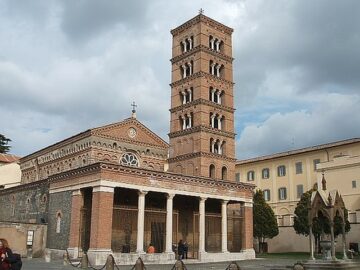About
The premise
Puhetta metsistä investigates how discussions about forests— and in particular those that shaped human attitudes and actions—emerged within the intellectual and cultural exchange between the Greek East and the Latin West in southern Italy. The project focuses on the period from the mid-10th century to the early 13th century. During this time, a warmer climatic phase supported population growth, one consequence of which was the increasing clearance of forests. Southern Italy became the principal arena for these debates about forests: foundational texts were translated there, and influential arguments were formulated that would shape forest-related discourse for centuries to come.
Engaging with the Latin–Byzantine discourse on forests provides a perspective from which to reflect on modern environmental debates. This project asks: how were forests described in the texts written, translated, and read in southern Italy? How did people justify their actions toward forested landscapes? At what point do these texts begin to reflect on the potentially harmful consequences of such actions? While the Christian tradition had long viewed humans as lords over all creation, the High Middle Ages saw new dimensions emerge in how this notion was understood. The use of forests began to be examined in more nuanced ways, and discussions increasingly addressed both the control of natural resources and the consequences of such control.
We study the rhetorical strategies through which people made sense of and gave meaning to forests and the transformations they underwent. These representations drew on themes such as divine creation, forest dangers, clearing and use of woodland, and environmental change revealed over time.
The pioneers of Montecassino

During the High Middle Ages, the monastery of Montecassino was arguably the most important cultural center in southern Italy. Its monastic school flourished in the 11th and 12th centuries, when the learned monks of Montecassino began to explore natural science in addition to classical and early Christian traditions. Their interest extended not only to Latin texts, but increasingly also to Greek and even Arabic sources. This intellectual openness set the groundwork for new conceptualizations of forests and their significance.
The influence of the Montecassino school extended to the courts of nearby principalities and to the papal administration in Rome. Its authority was felt throughout Christendom, making the monastery central to this project. Studying Montecassino means studying the broader society that surrounded and interacted with it.
We examine how this renewed interest in the natural sciences affected the way authors wrote about forests—across different textual genres and at a time of intense deforestation. As a major landholder, Montecassino was also a pioneer in intensive land use, forest clearance, and the foundation of new settlements. What literary models did its authors draw on in their writings about forests, and how did they adapt those models to address contemporary challenges? How did dialogue between the learned elite of the monastery, earlier textual traditions, and the Greek world of their own time shape their understanding of nature—and forests as a part of it? In which genres did the monks explore and express ideas about land clearance, both their own and that of society at large?
Rome and Grottaferrata

In Rome and its surrounding countryside, deforestation and new settlements played a prominent role in broader societal transformation. In the 10th century, the Church held most suburban lands, but over the course of the 11th century, the process of incastellamento—forest clearance and the establishment of new fortified settlements—shifted rural power into the hands of a rising urban aristocracy. Both the papacy and the nobility typically protected and entrusted their rural properties to religious institutions, particularly monasteries. One such monastery was Grottaferrata, located roughly 20 kilometers southeast of Rome. Alongside Montecassino, it serves as a main site of investigation in this project.
Grottaferrata was founded in 1004 by the Greek monk Nilus (d. 1005), and by design grew into a major center of Greek–Latin cultural exchange and learning. The monastery’s own landholdings and active role in forest clearance reveal how monastic institutions were closely entangled with material and political power. Like the ecclesiastical elite and aristocracy, they sought to master and domesticate the natural world. Over time, Grottaferrata’s influence extended well beyond its original territory, and through this expansion it became a key agent of deforestation and settlement in a wide surrounding region.